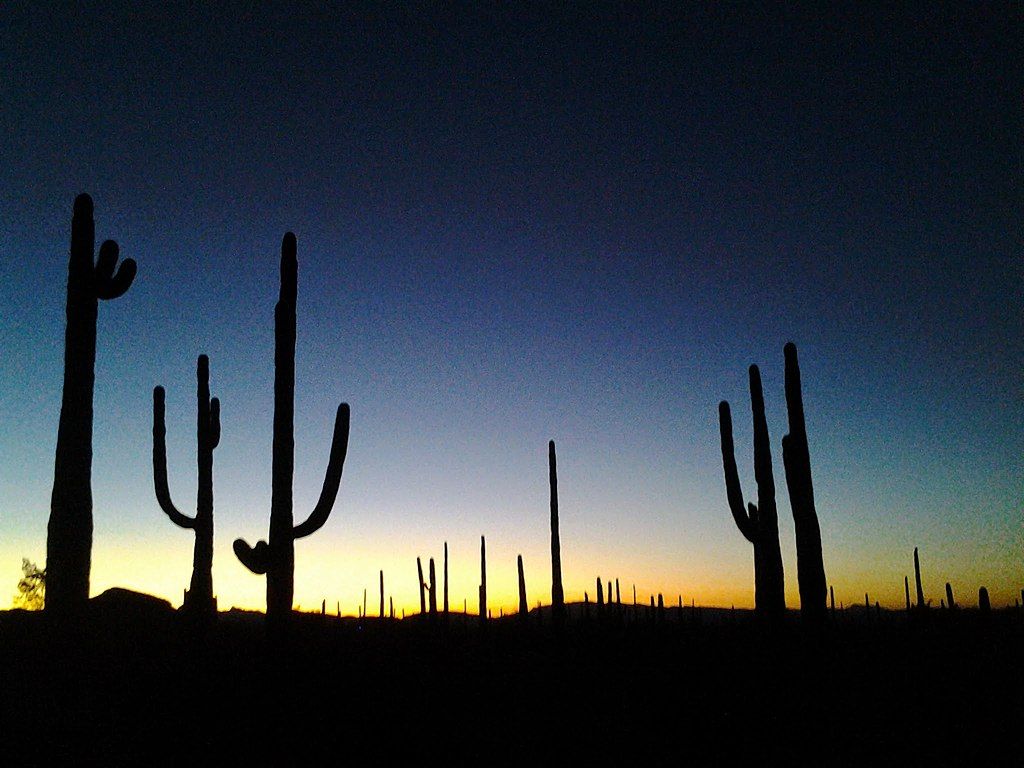
1 December 2021
This iconic symbol of the Sonoran Desert has a Pittsburgh connection.
The only member of its genus, the saguaro cactus was given the scientific name Carnegiea gigantea to honor Andrew Carnegie who established the Desert Laboratory on Tumamoc Hill for native plant research in Tucson in 1903.
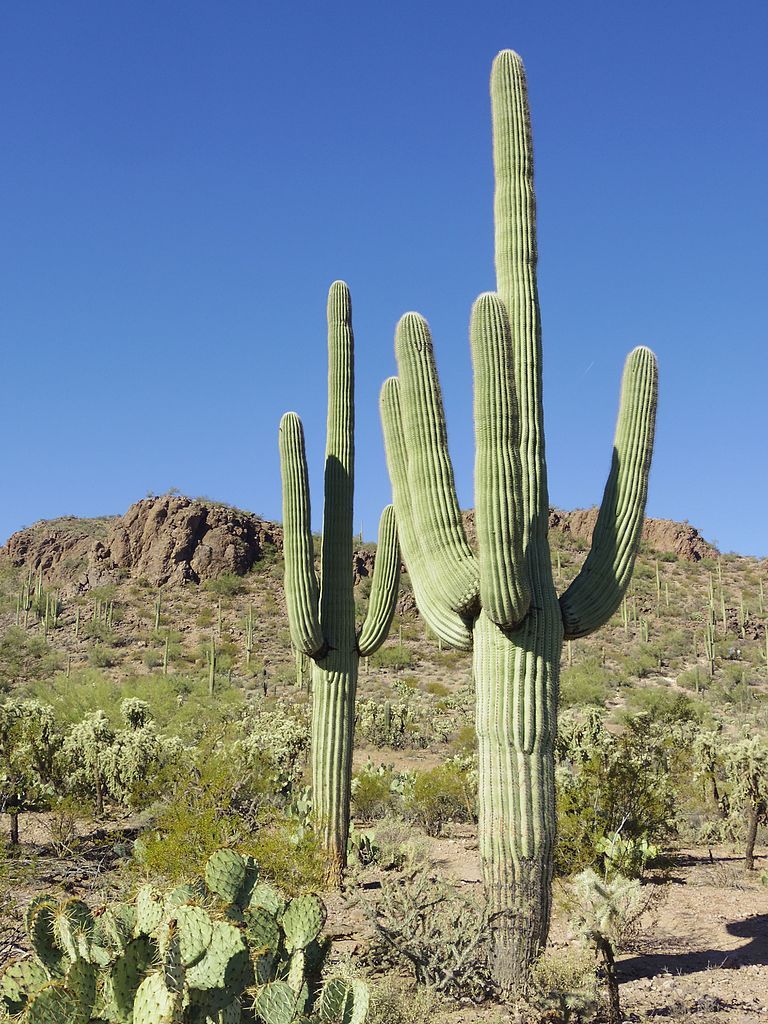
Though now a symbol of deserts everywhere, this unusual “tree” is native only to the Sonoran desert of Arizona, California and northwestern Mexico.
Saguaro (pronounced “sah-WAH-ro“) grows to 50 feet in height; its tremendous weight, up to nine tons, is supported by a skeleton of about two dozen spongy, wooden rods. Accordion pleats [expand and] contract as they gain and lose moisture. White flowers open after nightfall and close by late afternoon the following day. Saguaro has fleshy red fruit. Giant, leafless, columnar tree cactus with massive, spiny trunk and usually 2-10 stout, nearly erect, spiny branches.
— Wildflower.org: Saguaro cactus account
The saguaro’s woody skeleton is exposed when the plant dies. Click here to see a skeleton with arms.
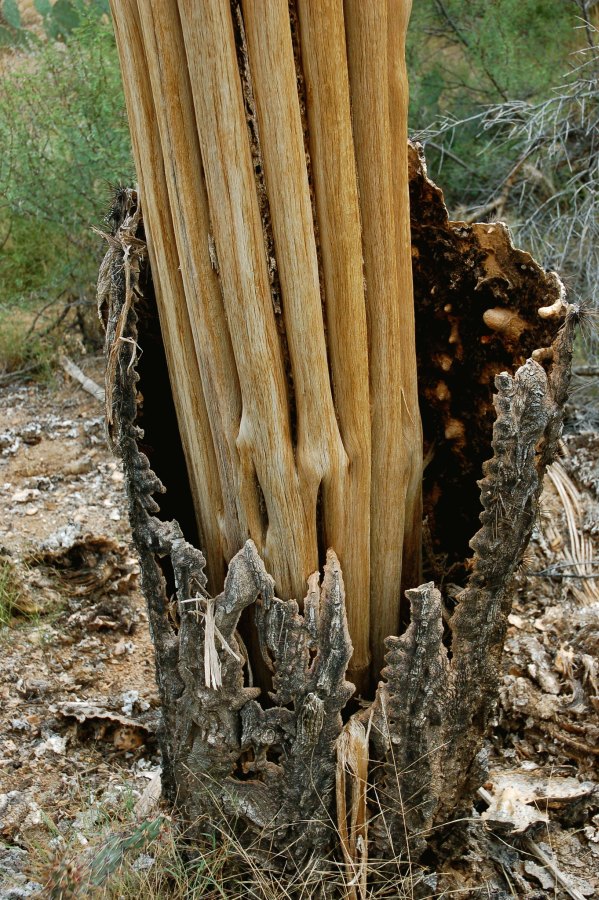
The pleats expand and the trunk looks fat after the rainy season.
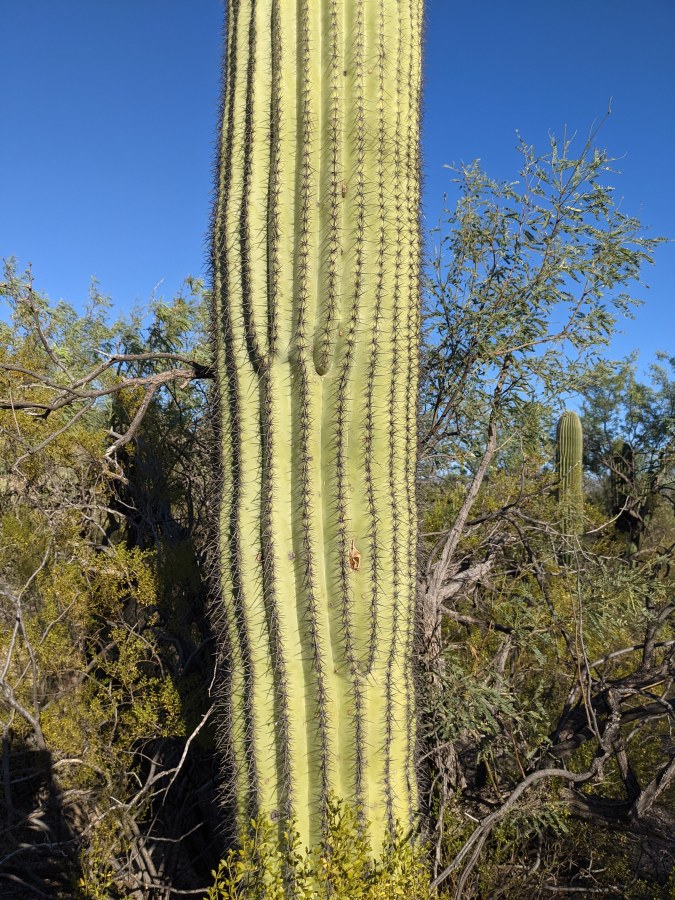
The plant reproduces via cross-pollinated flowers that bloom at the tips. The saguaro grows arms to produce more flowers.

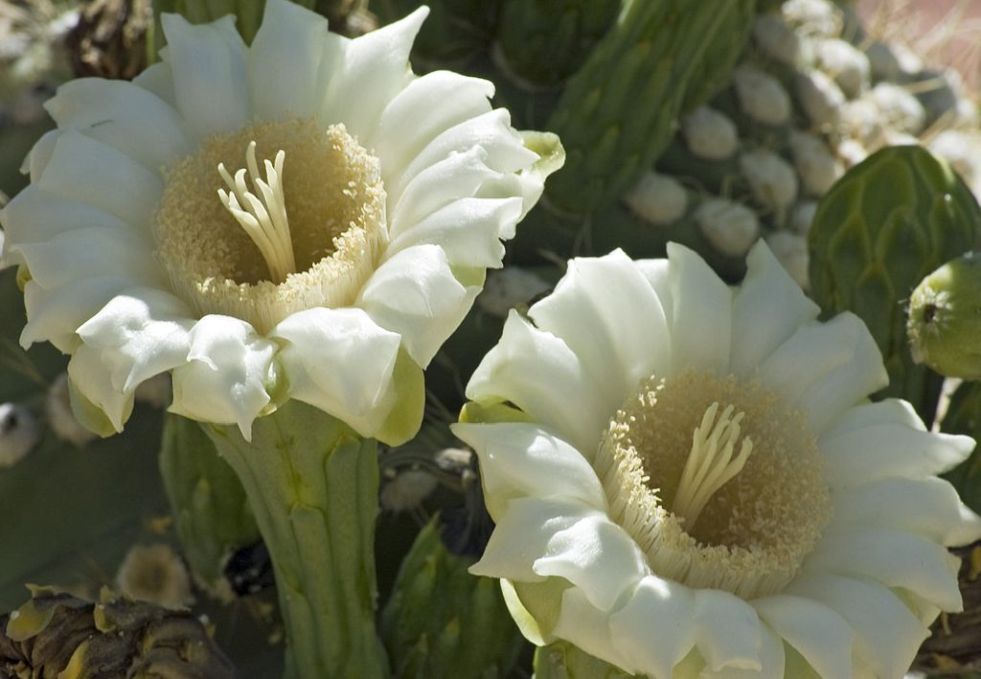
Birds, animals and humans make use of this cactus.
Native Americans made use of the entire cactus. … Gila woodpeckers and gilded flickers make round holes near the tops of branches for nests that are used afterwards by elf owls, cactus wrens, and other birds. Wildlife, especially white-winged doves, consume quantities of the seeds.
— Wildflower.org: Saguaro cactus account
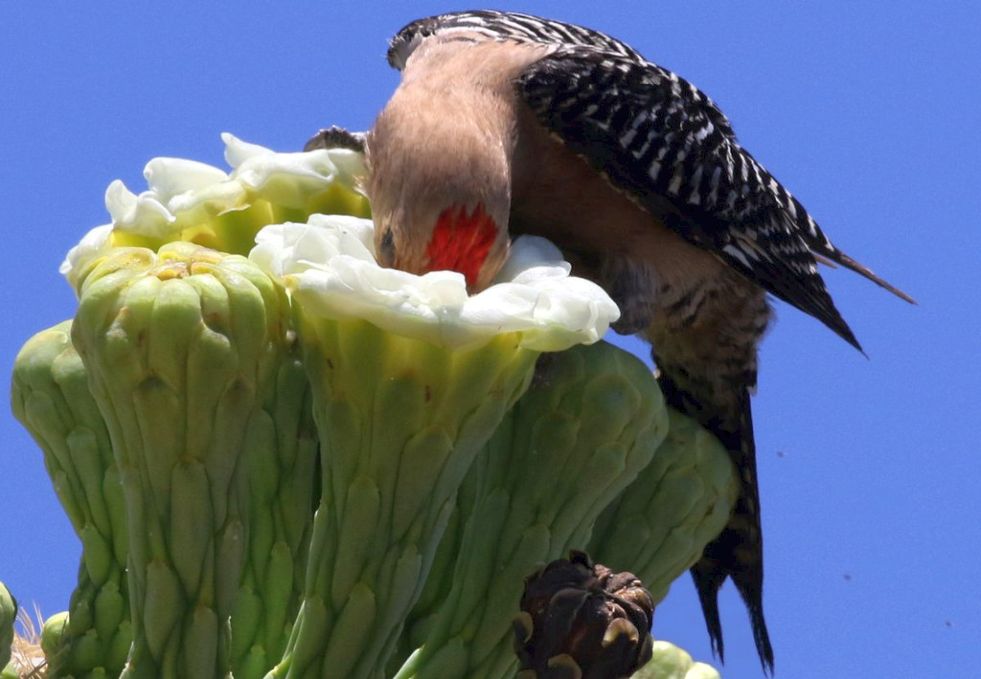
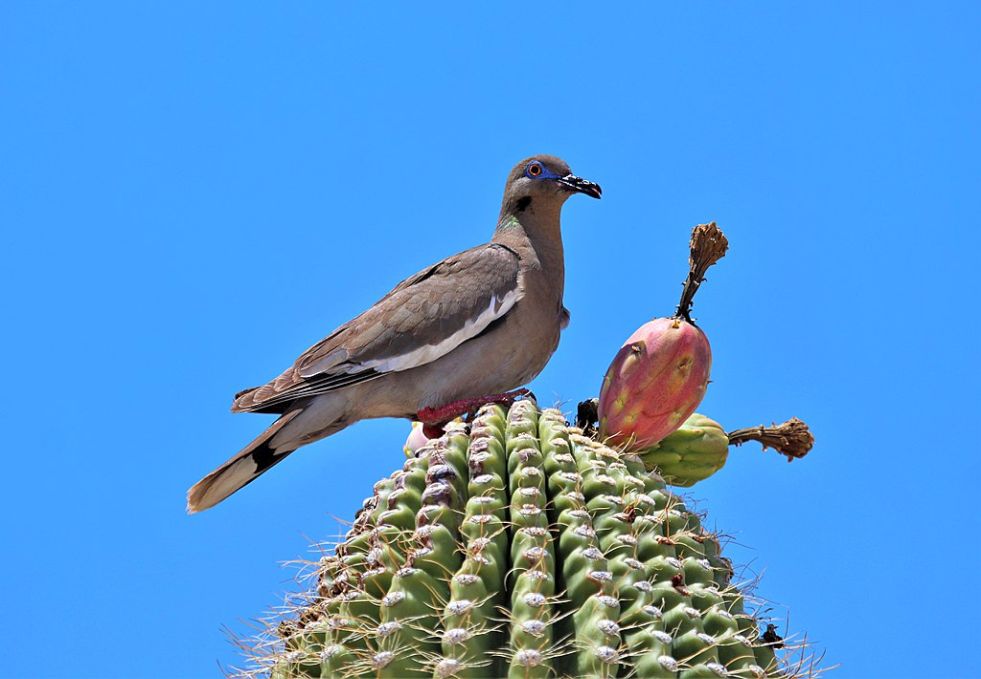
Saguaros can only survive where the temperature never drops below 28oF. They grow in Phoenix because of its urban heat island.
Read more cool facts about saguaro in this abbreviated account by C A Martin at Arizona State.
(photos from Wikimedia Commons and Jay Iwasaki on Flickr with Creative Commons license; click on the captions to see the originals)
Great post Kate! I didn’t realize how beautiful a desert could be until I traveled through one and spent some time there hiking and such.
I didn’t know Saguaro cacti produced fruit! That is really cool. I wonder which animals eat their fruit. Looks like the Gila woodpecker is enjoying the flower as a snack. Great post with awesome pictures. Thanks for sharing! We can learn so much from nature.